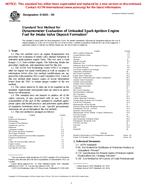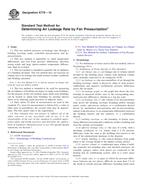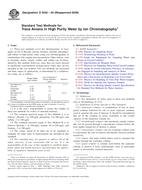1.1 This guide covers environmental studies such as risk assessments, planning projects, or research typically including characterization of ecological resources. Compliance with federal statutes (for example, National Environmental Policy Act 1970, (NEPA); Comprehensive Environmental Response, Compensation and Liability Act 1981, (CERCLA: with its Remedial Investigation/Feasibility (RI/FS) and Natural Resource Damage Assessment (NRDA) components); Resource Conservation Recovery Act (RCRA), and Federal Insecticide, Fungicide, and Rodenticide Act, (FIFRA)) as well as state regulations addressing projects such as hazardous waste site assessments and environmental impact analysis often requires characterization of vegetation. This guide presents a framework for selection of terrestrial vegetation sampling methods based on project-specific objectives. Method-specific practices are associated with this basic guide as annexes.
1.2 As with any data gathering activity, the value of information is affected by the strategy and sampling design. Determining the number of sample points, temporal and spatial location of sample points, relationships among sampling points, and the correspondence of other sampling activities are important considerations. Strengths and limitations of various methods are described in general terms in this guide. However, the key issues linked to data quality relate to the specific question being addressed and the adequacy of the field sampling plan.
1.3 &solely-SI-units;
This standard does not purport to address all of the safety concerns, if any, associated with its use. It is the responsibility of the user of this standard to establish appropriate safety and health practices and determine the applicability of regulatory limitations prior to use.
Product Details
- Published:
- 02/01/2008
- Number of Pages:
- 19
- File Size:
- 1 file , 250 KB


